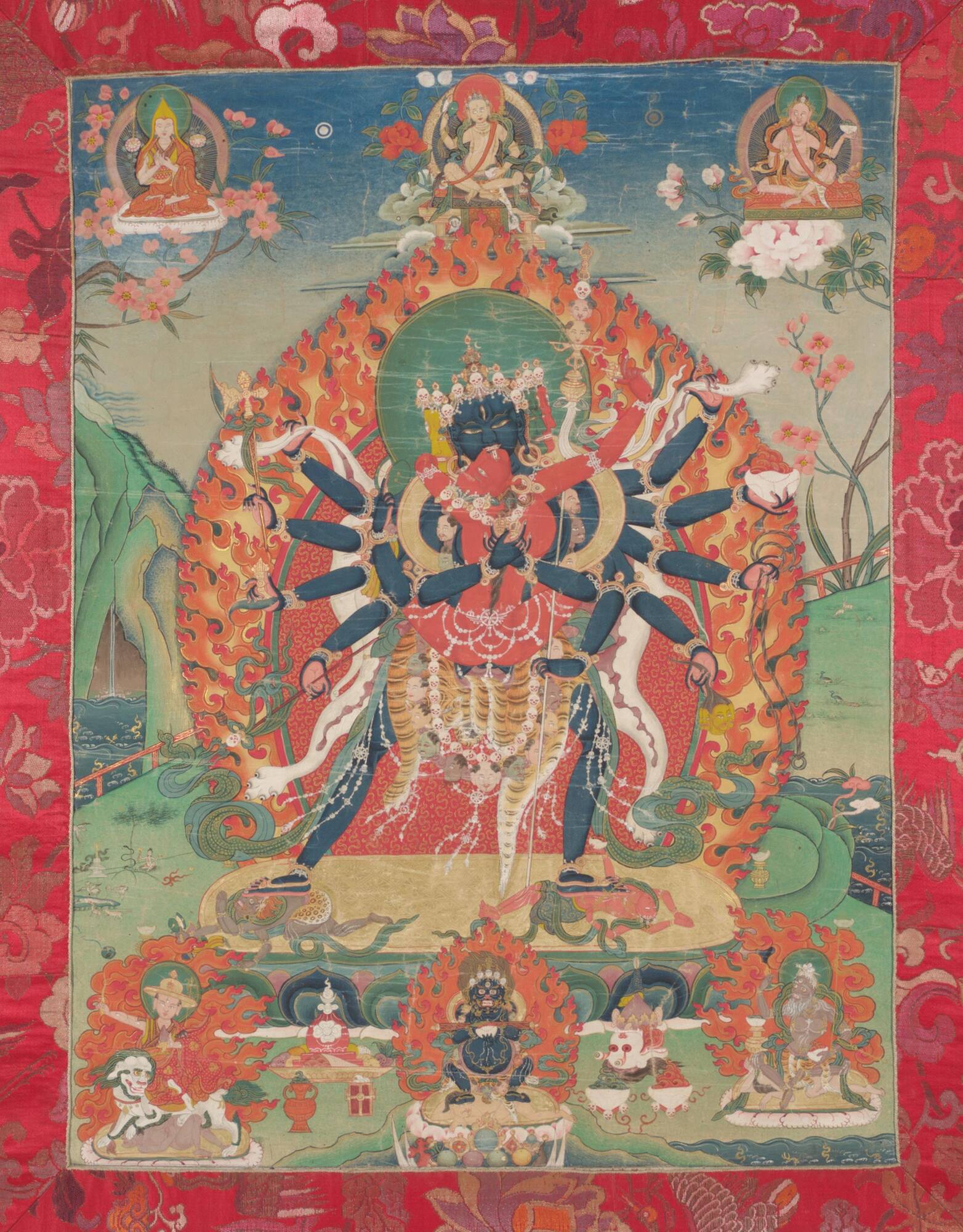
Object Details
Culture
Tibet
Date
18th century
Medium
Thangka: opaque watercolors and gold on cotton
Dimensions
25 x 19 inches (63.5 x 48.3 cm)
Credit Line
Gift of Dr. Leroy S. Lavine and Dorothy Lavine
Object
Number
81.086.001
The blue-skinned tantric Buddhist deity Paramasukha (Supreme Bliss) Chakrasamvara (Wheel Integration(…)
The blue-skinned tantric Buddhist deity Paramasukha (Supreme Bliss) Chakrasamvara (Wheel Integration) is shown here in union with his red-skinned female consort Vajravarahi. In this mystic form they represent the blissful union of compassion and wisdom that is the essence of enlightenment. He embraces his consort with two arms, held crossed in the HUM-sound gesture and holding a vajra and bell. In four of his right hands he holds a damaru drum, a vajra chopper, a trident and an ax. Four of his left hands hold a staff, a severed four-faced Brahma head, a skull bowl, and a lasso. With his back two hands he lifts the freshly flayed skin of the elephant of ignorance. A garland of skulls and heads is present along with his tiger-skin loincloth. The two main deities appear in a verdant landscape, a feature of many eighteenth-century Tibetan paintings that show influence from Chinese painting.












